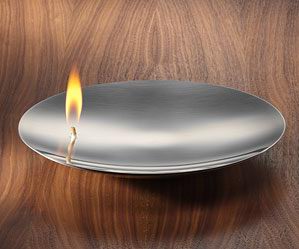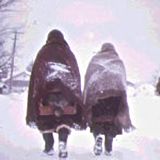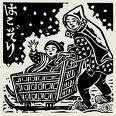[ . BACK to WORLDKIGO TOP . ]
. Vehicles used in Winter .
::::::::::::::::::::::::::::::::::::::::::::::::::::::::::::::::::::::::::::::::::::::::::::::::::::
Things to keep us warm (fuyumono)
***** Location: Japan
***** Season: All Winter
***** Category: Humanity
*****************************
Explanation
There are many things to keep us warm in winter, most of them are kigo.
Here is a growing list of them.
Please add the kigo of your region !
Click on the hyperlinks for more detailed information in the World Kigo Database.
Gabi Greve
cold winter night -
the welcome warmth of
a small candle

kalte Winternacht -
die willkommene Waerme
einer kleinen Kerze
Gabi Greve, December 2006
:::::::::::::::::::::::::::::::::::::::::::::::::::::::::::::::::::::::::::::::::::::::::::::::::::::
fuyuzashiki 冬座敷 (ふゆざしき) Japanese living room in winter
kantoo 寒燈 (かんとう) lamplight in winter
..... fuyu no hi 冬の燈(ふゆのひ)
..... fuyu tomoshi 冬燈(ふゆともし)
tatami gae 畳替 (たたみがえ) changing the tatami mats
blanket, buranketto ブランケット
woolen blanket, moofu 毛布
electric blanket, denki moofu 電気毛布
Daruma on a blanket (moofu)
:::::::::::::::::::::::::::::::::::::::::::::::::::::::::::::::::::::::::::::::::::::::::::::::::::::
. Stove ストーブ sutoobu ... and heating
danro, hibachi braziers, handwarmers, firewood and more, KIGO LIST
kanchuu, kan kuriya, kankuriya 寒厨 (かんちゅう)
kitchen in the cold
kigo for late winter
:::::::::::::::::::::::::::::::::::::::::::::::::::::::::::::::::::::::::::::::::::::::::::::::::::::
Japanese Interior Items to keep the body warm
winter sitting room, fuyu zashiki 冬座敷
staying at home, fuyugomori 冬篭り, 冬篭
portable folding screens, byoobu 屏風
used to keep the cold wind from reaching the body
more info is here:
Read about Byoobu and Tsuitate
screen in hip size, koshi byoobu 腰屏風
screen near the pillow, makura byoobu 枕屏風
e byoobu, e-byoobu 絵屏風 screen with paintings
kin byoobu 金屏風(きんびょうぶ)golden screen
..... kinbyoo 金屏(きんびょう)
. . . CLICK here for Photos !
ginbyoobu 銀屏風(ぎんびょうぶ)silcer screen
..... ginbyoo 銀屏(ぎんびょう)
. . . CLICK here for Photos !
byoobu uri 屏風売(びょうぶうり)vendor of screens
tsuitate 衝立(ついたて)free-standing screen, Stellschirm
. . . CLICK here for Photos !
.................................................................................
 Sliding doors between the room and the veranda to outside, shooji 障子
Sliding doors between the room and the veranda to outside, shooji 障子
fuyu shooji 冬障子(ふゆしょうじ) sliding doors for winter
light doors, akari shooji 明り障子
stand-alone doors, tsuitate shooji 衝立障子
doors from handmade paper, karakami shooji 唐紙障子
doors in hip size, koshi shooji 腰障子
doors for the cat, nekoma shooji 猫間障子
doors for viewing the snow, yukimi shooji 雪見障子
Azuma shooji あずま障子 sliding doors from Azuma (Kanto)
A wooden frame is covered with white washi paper.
秋の夜やしょうじの穴が笛を吹
aki no yo ya shôji no ana ga fue wo fuku
autumn evening--
the hole in the paper door
blows flute
Kobayashi Issa
Tr. David Lanoue
. Hoshina Masayuki 保科 正之
compared to a sliding door in winter .
.................................................................................
Sliding doors between the rooms, fusuma 襖 ふすま
臥す間, literally, a room to lie down, bedroom.
winter doors, fuyu fusuma 冬襖
white sliding doors, shirobusuma 白襖
fusumagami 襖紙(ふすまがみ)
washi Japanese paper for fusuma
karakami 唐紙(からかみ)special paper for sliding doors
ebusuma 絵襖(えぶすま)fusuma with paintings
shirobusuma 白襖(しろぶすま)white sliding door
fusumashooji 襖障子(ふすましょうじ)fusuma sliding doors
karakami shooji 唐紙障子(からかみしょうじ)fusuma with karakami paper
. . . CLICK here for Photos !
furubusuma 古襖(ふるぶすま)odl fusuma
Reference : fusuma sliding doors
.............................................
warm bedding, futon 布団、蒲団 quilted bedding
kakebuton 掛布団(かけぶとん)futon blanket, coverlet, top quilt
shikibuton 敷蒲団(しきぶとん)futon matress, underquilt
hanebuton 羽蒲団(はねぶとん)futon with down feathers
futon hosu 蒲団干す(ふとんほす)hanging the futon to dry, quilt airing
hoshibuton 干蒲団 (ほしぶとん) matress-drying,, matress airing, quilt-airing
shoulder cover, katabuton 肩蒲団
back cover, senabuton 背蒲団
hip cover, koshibuton 腰蒲団
bed cover with cotton layers, quilt, wataire 綿入
fusuma 衾 (ふすま) a kind of down futon (not to be mixed with the sliding doors) . Daunendecke
... kakebusuma 掛衾(かけぶすま)to cover you
... shikibusuma 敷衾(しきぶすま)to lie on
furubusuma 古衾(ふるぶすま)old futon blanket
kamibusuma 紙衾 (かみぶすま) futon from paper, the inside is padded with cotton. This was used by poor people, using old sliding doors from temples, which were discarded in late autumn.
... Tentokuji 天德寺(てんとくじ)"like in the tempel Tentoku-Ji"
Carpet, carpets, rugs (juutan, dantsuu だんつう【段通/緞通】)
juutan 絨毯 (じゅうたん)
kaapetto カーペット carpet
peechika ペーチカ pechka (Russian, pechika)
. . . Heating, fusuma, shoji in AUTUMN
::::::::::::::::::::::::::::::::::::::::::::::::::::::::::::::::::::::::::::::::::::::::::::::::::::
Things to do at home in winter
nochi no koromogae 後の更衣 (のちのころもが)
changing cloths for the winter season
kigo for early winter
Cloths are changed in spring and in early winter to prepare for the hot and cold season. The date for winter was the first of october according to the Asian lunar calendar.
keito amu 毛糸編む (けいとあむ) knitting with wool
keito 毛糸(けいと)wool, yarn
keitodama 毛糸玉(けいとだま)ball of wool
harugi nuu 春着縫う (はるぎぬう) preparing spring clothing
kigo for mid-winter
yugetate 湯気立 (ゆげたて) humidifier
..... kashitsuki かしつき【加湿器】
Sometimes medicinal herbs are put in a large water pot and this is placed on a stove.
Nowadays we also have electircal appliances.
Luftbefeuchter
kyuunyuuki 吸入器 (きゅうにゅうき) inhalator
hoshina yu 干菜湯 (ほしなゆ) bath with dried herbs
..... hibayu 干葉湯(ひばゆ)
hoshina buro 干菜風呂(ほしなぶろ)
In former times, the cut-off leaves of daikon radish or turnips were dried and put into the bathwater. It is said to help when the body feels cool (hieshoo) and for old people.
:::::::::::::::::::::::::::::::::::::::::::::::::::::::::::::::::::::::::::::::::::::::::::::::::::::
:::::::::::::::::::::::::::::::::::::::::::::::::::::::::::::::::::::::::::::::::::::::::::::::::::::
Winter clothing, fuyumono 冬物 ・fuyugi 冬着
sweater, seetaa セーター
cardigan, kaadigan カーヂガン
jumper, janpaa ジャンパー
vest, besuto ベスト
kooto コート
coat
... Azuma kooto 東コート(あずまこーと)coat from Edo (Azuma region)
... Naniwa kooto 浪華コート(なにわこーと)coat from Osaka (Naniwa)
overcoat, oobakooto オーバコート, ooba オーバー
..... gaitoo 外套
..... nijuu mawashi 二重回し (にじゅうまわし)
. . . CLICK here for Photos !
..... mawashi 回し(まわし)、tonbi とんび、inverness インバネス、manto マント、tsurigane manto 釣鐘マント(つりがねまんと)"overcoat like a hanging temple bell
..... hifu 被布 (ひふ) padded overcoat worn by small children and women
. . . CLICK here for Photos !
anorack, anorakku アノラック
jakettsu ジャケツ jacket ジャケット
kegawa 毛皮 (けがわ) fur-lined overcoat
kegawa uri 毛皮売(けがわうり)vendor of fur coats
kegawa ten 毛皮店(けがわてん)shop selling fur coats
..... kegoromo 毛衣 (けごろも) clothing from fur
... kawagoromo 皮衣(かわごろも)clothing from leather
... kawagoromo 裘(かわごろも), kawaginu かわぎぬ
kokyuu 狐裘(こきゅう)coat from fox fur
winter hat, fuyu booshi 冬帽子
fuyuboo 冬帽(ふゆぼう)winter hat
woolen hat, kebooshi 毛帽子
snow hat, yuki booshi 雪帽子
zukin 頭巾 (ずきん)
hood
..... maruzukin 丸頭巾(まるずきん)round hood
..... hoorokuzuki 焙烙頭巾(ほうろくずきん)flat round hood
. nagezukin 投頭巾 headgear for winter rituals .
. okoso zukin 御高祖頭巾 hood for winter .
WKD : hooroku 焙烙 earthen pans and how to put them on the head of Jizo
Daikokuzukin, Daikoku zukin 大黒頭巾(だいこくずきん)hood like the god of good luck,
Daikoku 大黒天
kakuzukin 角頭巾(かくずきん)square hood
. . . CLICK here for Photos !
Okosozukin 御髙祖頭巾(おこそずきん / 御高祖頭巾)hood made from a long shawl, like St. Nichiren used to wear.
. . . CLICK here for Photos !
bookan boo 防寒帽 (ぼうかんぼう) hat against the cold
kebooshi 毛帽子(けぼうし)fur hat
yukibooshi 雪帽子(ゆきぼうし)snow hat
 minobooshi
minobooshi 蓑帽子(みのぼうし)long straw winter hat
hookaburi 頬被 (ほおかぶり) cover head and cheeks with a towel or shawl
..... hookamuri 頬かむり(ほおかむり)
mimibukuro, mimi fukuro 耳袋 みみぶくろ ear warmer
masuku マスク mask (to protect your nose and mouth)
gloves, mittens, tebukuro 手袋
..... shutoo 手套(しゅとう)mittens
leather gloves, kawa tebukuro 皮手袋
tabi 足袋 (たび) tabi socks
tabi arau 足袋洗う(たびあらう)to wash the tabi socks
tabi hosu 足袋干す(たびほす)to dry the tabi socks
shawl, shooru ショール
muffler, mafuraa マフラー
shoulder shawl, katakake 肩掛
stola, sutooru ストール
erimaki 襟巻 (えりまき) shawl
..... kubimaki 首巻(くびまき)
fuyu shaatsu 冬シャツ (ふゆしゃつ) winter underwear, winter shirt
... keshaatsu 毛シャツ(けしゃつ)woolen winter underwear
... doogi 胴着 (どうぎ) padded, sleeveless undergarment
momohiki 股引 (ももひき) long underpants "riding on your thighs"
..... patchi ぱっち / パッチ
. . . CLICK here for Photos !
more Traditional Japanese Wear
fuyufuku 冬服 (ふゆふく) winter cloths
... fuyu no fuku 冬の服(ふゆのふく)
... fuyugi 冬着 (ふゆぎ)
... fuyugoromo 冬衣(ふゆごろも)
... fuyumono 冬物(ふゆもの)
Winterkleidung
Bedtime quilt (yogi) 夜着 よぎ
..... kaimaki, 掻巻(かいまき), quilt, fusuma 衾, sleeved futon

square shoulder shawl,
kakumaki 角巻
. kakumaki ningyoo 角巻き人形 dolls with a square scarf .
half coat, hanten はんてん 半纏
. . . CLICK here for Photos !
tanzen たんぜん 丹前 longer coat
... dotera 褞袍 (どてら)
. . . CLICK here for Photos !
A special back warmer from Tohoku is like a padded rucksack, without any sleaves.
It is said to keep the housewifes warm while leaving the arms free for the housework.

neko hanten ねこ半纏 backwarmer
fuyubaori, fuyu haori 冬羽織 (ふゆばおり)
haori coat for winter
... awasebaori 袷羽織(あわせばおり)
... wata-irebaori 綿入羽織(わたいればおり)with cotton padding
... chabaori 茶羽織(ちゃばおり)"tea haori coat" for ladies
. kawabaori 皮羽織 leather haori coat .
... kawabaori 革羽織(かわばおり)
yukigappa (yuki kappa) 雪合羽 (ゆきがっぱ) snow jacket
..... yukimino 雪蓑(ゆきみの)snow jacket made from straw
yukibakama (yuki hakama) 雪袴 (ゆきばかま)
hakama trousers for snow
atsushi 厚司 (あつし) warm winter garment, made from blankets by the Ainu in Hokkaido
..... atsushi 厚子(あつし)
. . . CLICK here for Photos !
vest, chanchanko ちゃんちゃんこ
..... sodenashi 袖無(そでなし)"without sleeves"

Especially used by old people and small children in the Edo period and later. In the Northern parts of Japan, everyone used it. Because it has no sleeves, you can easily do your daily chores with it, outside and inside the usually cold farm houses.
monpe もんぺ cotton trousers . Mompe.
..... moppe もっぺ
Often blue with fine patterns, still used by farm wifes nowadays. In winter they are quilted.
. . . CLICK here for Photos !
night coat, yogi 夜着 よぎ
..... kaimaki, 掻巻(かいまき), quilt, fusuma 衾
..... short night coat, koyogi 小夜着
Paper clothing, paper robes (kamiko) 紙衣 (かみこ) 紙子(かみこ)
wata 綿 (わた) cotton (garment)
wata-ire 綿入 (わたいれ) (garment with) cotton padding
MORE
Cotton-padded garments to keep you warm
.................................................................................
Shoes and footwear
 yukigutsu (yuki kutsu) 雪沓 (ゆきぐつ)
yukigutsu (yuki kutsu) 雪沓 (ゆきぐつ)
(traditional) snow shoes

waragutsu 藁沓(わらぐつ)
straw shoes for winter
..... fukagutsu 深沓(ふかぐつ)
..... tsumago 爪籠(つまご)
tsunanuki 綱貫 (つなぬき) special snow shoes
made from cow leather, with iron spikes on the bottom.
 kanjiki 樏 (かんじき)
kanjiki 樏 (かんじき) special bamboo contraptions to walk in the snow (snow-shoes)
wakanjiki 輪樏(わかんじき)round kanjiki
kane kanjiki 金樏(かねかんじき)kanjiki made from metal
ita kanjiki 板樏(いたかんじき)kanjiki with wooden plates
They are used by the bear hunters (matagi) in winter to walk through the forest.
yukigeta 雪下駄 (ゆきげた) snow geta sandals
bookan zoori 防寒草履(ぼうかんぞうり)cold-proof sandals
With a special warm cover for the toes.
. . . CLICK here for Photos !
yukifumi 雪踏 (ゆきふみ)"stepping on snow"
special winter sandals
. . . CLICK here for Photos !
 fumidawara 踏俵(ふみだわら)special boots
fumidawara 踏俵(ふみだわら)special boots to make a way for walking in snowy counry.
They look like
tawara, bundles for rice
kigo for late winter
:::::::::::::::::::::::::::::::::::::::::::::::::::::::::::::::::::::::::::::::::::::::::::::::::::::
:::::::::::::::::::::::::::::::::::::::::::::::::::::::::::::::::::::::::::::::::::::::::::::::::::::
Japanese Food to keep you warm
The most important is the
hodgepodge, nabe 鍋 なべもの that comes in many varieties.
wild boar stew, shishinabe 猪鍋
..... "peony stew" botan nabe 牡丹鍋
mixed stew, yosenabe 寄せ鍋、寄鍋
mixed seafood pot, ishikari nabe 石狩鍋
hot reddish in broth, furofuki 風呂吹き
Hot steamed rice, fukashimeshi 蒸飯
hot soup, shiru, xxx jiru 汁
soup eaten in the dark with candlelight, shared with good friends. Sometimes they had to guess the kind and number of ingredients in the dark.
..... yamijiru 闇汁
roots soup, kaburajiru 蕪汁 かぶらじる
blowfish soup, fugujiru 河豚汁
.....
Blowfish, globe fish (fugu)
vegetable and tofu soup, kenchinjiru けんちんじる
tofu in boiling water, yudoofu 湯豆腐
..... yuyakko 湯奴
 Oden hodgepodge stew
WINTER FOOD ... ... The WASHOKU Saijiki
Oden hodgepodge stew
WINTER FOOD ... ... The WASHOKU Saijiki
:::::::::::::::::::::::::::::::::::::::::::::::::::::::::::::::::::::::::::::::::::::::::::::::::::::
Hot Drinks, our main Kigo List
hot rice wine, atsukan 熱燗, kanzake 燗酒
.....
Ricewine, rice wine (sake, saké, saki, Japan)
*****************************
Worldwide use
tropical regions
sweat tops, sweaters
kigo for the wet seasons
. Gloves in Kenya
*****************************
Things found on the way
Food of Japan, by Naomichi Ishige
*****************************
HAIKU
. Yosa Buson 与謝蕪村 in Edo .
襟巻の浅黄にのこる寒さかな
erimaki no asagi ni nokoru samusa kana
lingering
in the light blue of the scarf
winter's cold
This captures the chill of an early spring day through the color of the woman's scarf. It makes one wonder if the color is not indicative of the woman's age, looks, and even character.
Tr. and comment - Makoto Ueda
Erimaki long and wide mufflers were often worn by ill people and the elderly.
 nokoru samusa
nokoru samusa is a kigo for early spring.
. asagi あさぎ - 浅黄 - 浅葱
hues of light yellow, green and blue .
. ajisai ya katabira doki no usu-asagi .
Basho
:::::::::::::::::::::::::::::::::::::::::::::::::::::::::::::::::::::::::::::::::::::::::::::::::::::
毛糸編はじまり妻の黙はじまる
keito ami hajimari tsuma no moda hajimaru
wool knitting starts
the silence of my wife starts
Kato Shuson, 加藤楸邨 Katoo Shuuson
:::::::::::::::::::::::::::::::::::::::::::::::::::::::::::::::::::::::::::::::::::::::::::::::::::::
how cool the mug
before the coffee
is poured -
Paul MacNeil
HSA Bernard Lionel Einbond Renku Collection 2005
:::::::::::::::::::::::::::::::::::::::::::::::::::::::::::::::::::::::::::::::::::::::::::::::::::::
毛皮着て逢えない筈の人と逢う
kegawa kite aenai hazu no hito to au
I wear a fur coat -
I meet a person not ment
to meet
Matsumoto Kyooko 松本恭子 (1958 - )
:::::::::::::::::::::::::::::::::::::::::::::::::::::::::::::::::::::::::::::::::::::::::::::::::::::
I am almost glued
to my warm futon ...
icy morning
Gabi Greve, January 15, 2009
*****************************
Related words
*****
Winter (fuyu, Japan) the season
*****
Autumn Food ... ... KIGO list
*****
Sweets from Japan (wagashi) 和菓子歳時記
The Japanese Sweets Saijiki
***** Washoku, Winter Food from Japan
Check the WKD LIST of
. HUMANITY and All Winter Kigo
:::::::::::::::::::::::::::::::::::::::::::::::::::::::::::::::::::::::::::::::::::::::::::::::::::::
[ . BACK to DARUMA MUSEUM TOP . ]
[ . BACK to WORLDKIGO . TOP . ]
:::::::::::::::::::::::::::::::::::::::::::::::::::::::::::::::::::::::::::::::::::::::::::::::::::::


































